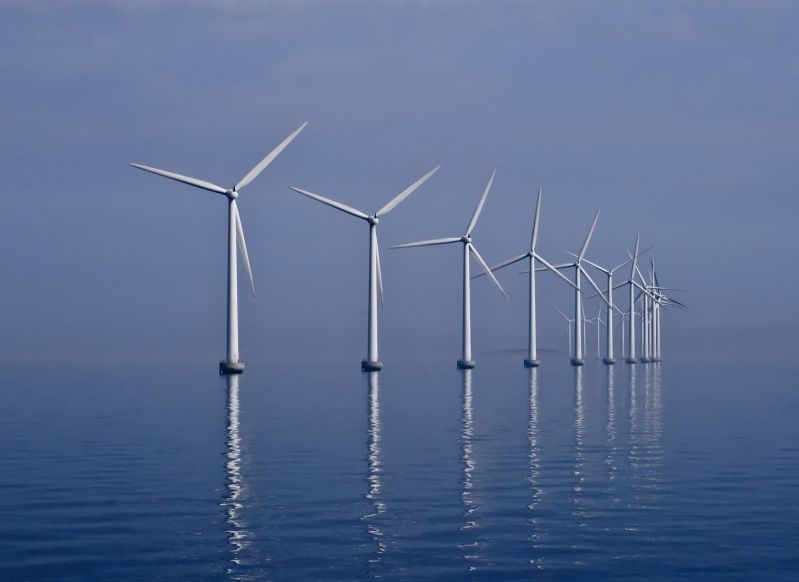First Evidence That Offshore Wind Farms Are Changing the Oceans
Published on by Water Network Research, Official research team of The Water Network in Academic
Wind turbines can support vast colonies of marine species in areas where they were previously rare.
by Emerging Technology from the arXiv
How are offshore wind farms, and the new colonies of blue mussels they support, changing the oceans?

Middelgrunden wind farm, Source: Wikimedia Commons, Author Kim Hansen
Today we get an answer thanks to the work of Kaela Slavik at the Helmholtz Centre for Materials and Coastal Research in Germany and a few pals, who have investigated the impact of offshore wind power on marine ecosystems for the first time. Their conclusions are stark—they say offshore wind platforms are changing the nature of marine ecosystems in complex, unanticipated, and beneficial ways.
The team’s method is straightforward. Their goal is to measure the current changes in the marine ecosystems caused by offshore wind farms and then create a computer model that they can use to predict future changes.
The team starts with measurements of the biomass of blue mussels that a typical wind turbine can support—some four metric tons of the shellfish. Using maps of current and planned windfarms in the North Sea, it’s then straightforward to estimate the total mass and distribution of blue mussels supported by wind farms now and in 2030.
That gives an interesting result. Mussel beds are currently concentrated around the coast, but wind farms are offshore. “Once all the planned wind farms are in operation, they will provide habitat for mussels that are equal to 20 percent of the current stock from natural mussel beds along the coast,” say Slavik and co.
The next steps are harder. An important question is how the new mussel colonies will change phytoplankton levels in the ocean. Slavik and co investigate this using water and satellite measurements. But this is complex data that varies significantly from year to year.
Beyond that, the team studies the simulated effect of blue mussels as “ecosystem engineers”—how they support other species in the North Sea.
Their conclusions make for interesting reading. Slavik and co say one important effect of offshore wind farms is that they act as marine preservation areas, because fishing and bottom trawling is not allowed for safety reasons. So these areas can support greater biodiversity than unprotected areas.
Blue mussels themselves also significantly change this environment. They support other species, since their shells and shell litter are habitats for other creatures. The way blue mussels filter feed makes water clearer, and they concentrate nutrients for other species. This increases “the degree of habitat complexity, encouraging a higher level of species richness,” say the team.
One unanticipated consequence of all this is that these new ecosystems can support alien species which would not otherwise be able to gain a foothold. One example is the marine splash midge, which is native to Australasian waters and transported on the hulls of ships. “It has been observed at offshore wind farms in Denmark and along the Swedish Baltic coast,” say Slavik and co.
But the long-term consequences of this change in biodiversity is unknown. “Through these changes in biodiversity, offshore wind farms could shape the marine ecosystem beyond their physical boundaries,” say the researchers.
Read full article: MIT Technology Review
Media
Taxonomy
- Technology
- Ecosystem Management
- Ecosystem Management
- Marine
- Oceanographic Survey
- Wind Energy
- Renewable Energy
- Wind Energy
- Renewable Water Resources